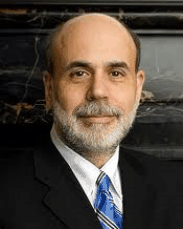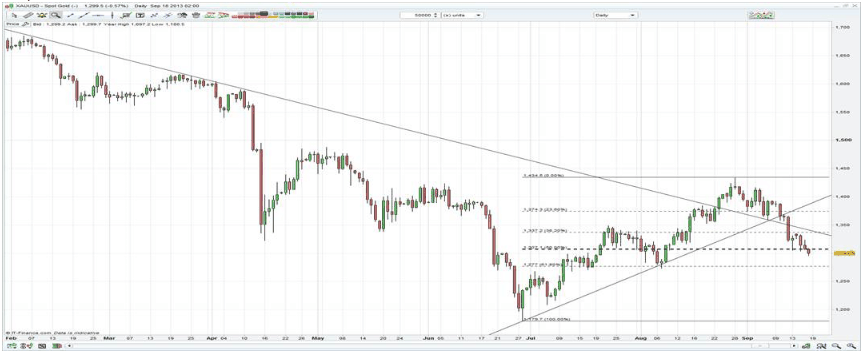
It’s all about the FOMC meeting at 04:00 AEST tomorrow morning and to be honest nothing else really matters. Ben Bernanke speaks 30 minutes later at 04:30 AEST and the chairman’s speech will also be highly watched, potentially increasing volatility across the board.
Data in the US has been OK, but hardly enough to warrant a sizeable cut to its $85 billion a month bond buying program. The two key metrics which the Fed pays attention to, given its dual mandate, are price stability and full employment, and nether are brilliant. With the 160,000 jobs created on average over the last six months is 40,000 below Chicago Fed president Charles Evans target of 200,000. Core PCE at 1.2% is also significantly below the Fed’s longer term target of 2.5%.
There are three things that are fundamental to tonight’s meeting. The first is how much (if at all) the Fed will lower its asset purchase program? As things stand we feel the market is pricing in a $5 to $10 billion cut in the pace of the buying, although there are different thoughts as to whether this will be solely limited to US treasury buying or both US treasury and mortgage-back security buying. Any more than $10 billion should be USD positive and negative for equity and bonds (yields up). Gold and equity bulls will be hoping the bank don’t cut at all, potentially signalling it could happen in December. We feel the risk is that tapering will actually be announced tonight, but actually start in October, so the Fed has more time to smooth over any volatility this may cause.
Point two is around the Fed’s economic projections, which also come out also at 04:00 AEST. The risk that the Fed cut its real GDP forecasts is clearly very real and we would not rule out a change in forecasts to 2.2% (from 2.45% in June) for 2013 and 3% in 2015 (from 3.25). The board provides its first estimate for 2016 growth, which we feel should range between 2.5% and 3%, and this will be interesting because it is potentially the first read that includes how growth could be impacted by a hike in the Fed funds rate, which the Fed should detail in its forecasts as well. The Fed will also look to alter its core PCE inflation rate, while unemployment could also be tweaked through to 2016.
The third point, and in some way the most important for markets, isn’t the size of tapering; it is more about its forward guidance framework around what will be the triggers for a rise in the Fed funds rate. This is where the real action in commodities, the USD, fixed income, emerging market currencies and equities could materialise. This is where the Fed will need to anchor expectations.
The Fed currently would look to hike the funds rate when the unemployment rate is seen hitting 6.5%, and this should still remain in place. There is a possibility we see the Fed provide clarification that the 6.5% unemployment threshold for putting up rates is conditional on inflation trending to the 2%, although we feel this is largely priced in. What is not priced in and would cause a 15-20 basis point reaction in the US ten-year to the downside, would be if the Fed cut its employment threshold to 6% (from 6.5%). This, in theory, would push back on future rate hike expectations by around eight to nine months and would cause AUD/USD to rally to 0.9500, cable to smash the 1.60 barrier, gold to rally $50 and cause US equities to easily break all-time highs. Emerging markets would also love this. The chance of this happening though is low, and the market is not positioned for this action.
The Fed has tried so hard for so many months to separate the distinction between the tapering process (and thus its balance sheet) and a move in interest rates and tonight this will come in front and centre. All the market sees thus far is that tapering is a start of a normalising process and we feel the Fed’s message will again be reiterated loud and clear. They will ramp home that a tapering exercise is a reflection of the economic strength; however it is in no way a start of a normalisation in rates. In theory the economic projection really does matter then, because if the Fed cut its 2016 unemployment rate from 5.5% to 5.2% (we think it could be higher though) they will probably have to lower the employment threshold to 6% and, as previously mentioned, this should be a risk positive affair.
As detailed as we feel the risks are, the Fed actually verge on the dovish side, which in theory is good for gold. However, price action is not convincing at all and a daily close tonight below $1307 (the 50% retracement of the June to August rally) would see us suggest new shorts on gold. This would also coincide with the daily MACD firmly below zero.
